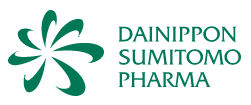预约演示
更新于:2025-05-07
Syncope
晕厥
更新于:2025-05-07
基本信息
别名 A faint、Attack(s);fainting、Blackout + [78] |
简介 A transient loss of consciousness and postural tone caused by diminished blood flow to the brain (i.e., BRAIN ISCHEMIA). Presyncope refers to the sensation of lightheadedness and loss of strength that precedes a syncopal event or accompanies an incomplete syncope. (From Adams et al., Principles of Neurology, 6th ed, pp367-9) |
关联
3
项与 晕厥 相关的药物靶点 |
作用机制 5-HT3 receptor拮抗剂 |
在研适应症 |
最高研发阶段批准上市 |
首次获批国家/地区 美国 |
首次获批日期1991-01-04 |
作用机制 adrenergic receptor激动剂 |
最高研发阶段批准上市 |
首次获批国家/地区 日本 |
首次获批日期1989-01-17 |
靶点 |
作用机制 ADRA1激动剂 |
原研机构 |
最高研发阶段批准上市 |
首次获批国家/地区 日本 |
首次获批日期1954-10-11 |
408
项与 晕厥 相关的临床试验NCT05560126
Validation of the Canadian Prehospital Syncope Risk Score
Background: Syncope is defined as a sudden, brief loss of consciousness (LOC) followed by a rapid complete recovery. It accounts for 160,000 emergency department (ED) visits each year in Canada. Despite this, few people are hospitalized (
15%) and even fewer will die (
1%). Two-thirds of patients with syncope arrive at the ED by calling 911. There are many causes of syncope. Identifying patients at low risk for bad outcomes would allow paramedics to safely determine which patients need care in the ED from those who can remain home. The research team recently developed the Canadian Prehospital Syncope Risk Score (CPSRS) which accurately identified patients at low risk for 30-day serious outcomes.
Objective: The goal of this study is to validate the accuracy of the CPSRS in the prehospital setting or refine if needed to predict the risk of 30-day serious outcomes for patients with syncope.
Methods: The research team will enroll patients with syncope from five paramedic services across Canada (British Columbia - Vancouver and Kelowna areas only, London-Middlesex, York Region, Frontenac, and Ottawa). The research team will exclude patients <18 years old, LOC >5 minutes, changes in mental status from baseline, alcohol or drug intoxication, or language barrier. Paramedics will fill out a study data collection form with the CPSRS items and additional data should the tool need refinement. The data will be entered into a secure database and will assess patient outcomes (death and potentially life-threatening medical conditions) at 30 days. The research team will examine model accuracy using standard prediction measures and look to improve model accuracy if needed. The research team expects to enroll 4875 patients over a 1-year recruitment period based on annual call volumes.
Expected Outcomes: Once validated, the tool could reduce the number of patients transported to the hospital by identifying those at low risk. This would improve patient-oriented care, while at the same time saving valuable paramedic and ED resources.
15%) and even fewer will die (
1%). Two-thirds of patients with syncope arrive at the ED by calling 911. There are many causes of syncope. Identifying patients at low risk for bad outcomes would allow paramedics to safely determine which patients need care in the ED from those who can remain home. The research team recently developed the Canadian Prehospital Syncope Risk Score (CPSRS) which accurately identified patients at low risk for 30-day serious outcomes.
Objective: The goal of this study is to validate the accuracy of the CPSRS in the prehospital setting or refine if needed to predict the risk of 30-day serious outcomes for patients with syncope.
Methods: The research team will enroll patients with syncope from five paramedic services across Canada (British Columbia - Vancouver and Kelowna areas only, London-Middlesex, York Region, Frontenac, and Ottawa). The research team will exclude patients <18 years old, LOC >5 minutes, changes in mental status from baseline, alcohol or drug intoxication, or language barrier. Paramedics will fill out a study data collection form with the CPSRS items and additional data should the tool need refinement. The data will be entered into a secure database and will assess patient outcomes (death and potentially life-threatening medical conditions) at 30 days. The research team will examine model accuracy using standard prediction measures and look to improve model accuracy if needed. The research team expects to enroll 4875 patients over a 1-year recruitment period based on annual call volumes.
Expected Outcomes: Once validated, the tool could reduce the number of patients transported to the hospital by identifying those at low risk. This would improve patient-oriented care, while at the same time saving valuable paramedic and ED resources.
开始日期2025-06-01 |
ACTRN12624001233516
Co-designed Caregiver Education for Prevention of Falls in Patients with Cognitive Impairment: a realist implementation, feasibility and preliminary effectiveness pilot study
开始日期2025-05-01 |
申办/合作机构 |
ChiCTR2500100059
Study on the correlation between catecholamines, vitamin D and emotional disorders in children with orthostatic intolerance
开始日期2025-04-15 |
申办/合作机构 |
100 项与 晕厥 相关的临床结果
登录后查看更多信息
100 项与 晕厥 相关的转化医学
登录后查看更多信息
0 项与 晕厥 相关的专利(医药)
登录后查看更多信息
26,267
项与 晕厥 相关的文献(医药)2025-08-01·Autonomic Neuroscience
Orthostatic cardiovascular responses to postural sway and discreet counterpressure maneuvers
Article
作者: Robinovitch, S N ; Lando, J ; Parsons, I T ; Hockin, B C D ; Elabd, K ; Williams, E L ; Claydon, V E ; Lucci, V-E M
2025-08-01·International Journal of Cardiology
Clinical outcomes associated with Insertable cardiac monitor implantation in Korea: A Nationwide claims data analysis
Article
作者: Lee, Ji Hyun ; Oh, Il-Young ; You, So-Jeong ; Cho, Youngjin ; Kwon, Sol ; Lee, So-Ryoung ; Choi, Eue-Keun ; Jeon, JinKyung ; Oh, Seil
2025-07-01·The American Journal of Cardiology
Incidence of Clinically Significant Ventricular Arrhythmias in Patients on Home Inotrope Infusion in the Contemporary Era
Article
作者: Shaik, Ayesha ; Fakess, Seth ; Panza, Gregory A ; Lico, Ina ; Tolat, Aneesh
637
项与 晕厥 相关的新闻(医药)2025-05-05
·美通社
上海
2025年5月5日
/美通社/ -- 有这样一种隐匿而凶险的罕见疾病,它以长期缺氧造成的"蓝嘴唇"为标志,未经治疗的患者5年存活率仅为20%左右,曾被称为"心肺血管系统的癌症"——这就是肺动脉高压。
2025年5月5日,第十四个"世界肺动脉高压日"到来之际,强生创新制药联合艺术创作者"张大强的白日梦"发起"蓝唇慢游计划",通过街头艺术的呼吁、权威科普的接力,为肺动脉高压群体编织一张温暖的社会支持网。
"
慢"是共情,更是承诺:让生命与关怀同步呼吸
肺动脉高压患者因心肺功能严重受损,日常活动时血氧供应不足,快速或剧烈运动会引发呼吸困难、晕厥,严重时甚至有猝死风险。因此,"蓝唇慢游计划"中的"慢"既是呼吁公众放慢脚步,感受肺动脉高压患者的生存之痛,也是对疾病长期抗争的注解。"慢游"对大众而言,是主动选择的生活方式;但对肺动脉高压患者来说,这是命运强加的生存节奏,他们不得不主动"减速",以降低身体负荷,每一次呼吸都需拼尽全力;对社会而言,这场"慢游"则是一场持久的心灵对话——疾病或许罕见,但爱与关注不应稀缺。
蓝唇慢游计划倡导"慢"而不"止",以持续行动守护肺动脉高压患者的生命防线:从医学支持到心理关怀,从破圈科普到精神疗愈,每一步都需社会耐心同行。作为一种慢性病,肺动脉高压的长期预后需要患者、家属、医生及社会各界的持续关注,共同筑起守护患者生命的坚固防线。
艺术创作者
"
张大强的白日梦":在街头为"蓝唇族"写下一首诗
作为蓝唇慢游计划的街头艺术发起方,"张大强的白日梦"以其独特的公共实践受到公众的关注与喜爱。他坚持"街头即美术馆"的理念,用即兴创作打破艺术与生活的边界。此次,他将目光投向"蓝嘴唇"群体,策划了一场别开生面的公共艺术实践,希望以此打破疾病认知的边界。
在上海的梧桐树下,他带着巨型的"蓝嘴唇"装置走向街头,邀请路人参与一场特别的街头互动:那些勇敢尝试将手伸进"蓝嘴唇"的人,将获得红蓝渐变的嘴唇和爱心小雕塑,作为鼓励患者直面疾病、传递社会温暖的象征。蓝唇标志从忧郁的蓝到炽烈的红,色彩渐变隐喻患者从困境走向希望的历程。这场互动不仅旨在提升公众对罕见病的认知,更让街头化作公众共情的起点,给予肺动脉高压患者更多的关注和关怀。
疾病不该是冰冷的标签,艺术可以成为温暖的翻译器。张大强如此诠释他的创作初衷:"我希望通过街头这种轻松的互动方式,让公众以更开放的心态去认识和了解这一疾病,也让患者能够感受来自社会的支持。相信在大家的共同努力之下,我们有朝一日能够战胜它"。
"慢游"科普计划:让
"
罕见"成为
"
可见"的力量
为向公众提供专业权威的科普知识,将专业医学知识转化为公众可理解、易获取的健康指南,新华网推出"蓝唇慢游计划"线上科普专区。通过趣味海报等创新形式,科普专区系统化呈现肺动脉高压的疾病认知体系——从"蓝唇族"典型症状的识别,到以右心导管检查(mPAP>20mmHg)为核心的诊断金标准;从"早达标、重维持、降风险"的三维治疗目标,到支持治疗与靶向治疗的协同方案,全方位构建公众对PAH的科学认知框架,以科普的力量呼吁全社会共同关注蓝唇族的生存境遇。
这些专业的医学知识更被转化为轻松易懂的社交卡片,通过"不一样的心动信号!肺动脉也会爆表"、"PAH治疗不画饼,5年生存率早治早赢!"、"PAH治疗不单挑!‘联'手打怪,‘药'到病缓!"等通俗表达,在新华网的权威平台广泛传播,推动全社会形成关爱"蓝唇族"的共识。只有让更多PAH患者和潜在人群更好地了解应对疾病的科学手段,实现早发现、早诊断、早治疗,才能帮助他们更有效地配合治疗,尽快达到较好的治疗效果和生存目标。
社会共筑蓝唇"氧舱":每一份
"
慢"都是滋润生命的养分
多年来,强生创新制药持续推动蓝唇公益项目,此次"蓝唇慢游计划"再一次通过跨界合作与公众倡导,将关爱蓝唇的初心转化为可持续的守护力量,让患者在医疗进步与社会关爱的双重护航下,重拾对未来的信心。
作为全球医疗健康领域的先行者,强生创新制药始终将患者需求置于首位。面对肺动脉高压这一严峻挑战,强生创新制药不仅聚焦科学带来创新的治疗方案,更致力于构建覆盖疾病全周期的支持体系——从早期筛查倡导、创新药物可及性推动,到患者教育与心理关怀,每一步都凝聚着对"生命至上"的坚守。
当"蓝嘴唇"从医学符号变为与各方对话的媒介,当"慢游"从个体行动凝聚为群体力量,这场公益计划希望帮助肺动脉高压群体走出疾病的阴影,让蓝唇族都能在社会共筑的暖流中,畅快呼吸。无论是街头驻足的路人,还是转发科普的网友,每个人都能成为守护蓝唇族"社会氧舱"的一分子。
2025-05-03
·医脉通
白夜追凶!来源 | “听李医生说”微信公众号作者 | 李鸿政急诊科来了个病人。男性患者,48岁,电焊工人,姓江。患者2小时前在1米高的台上电焊作业,突然嘣一声,整个人结结实实摔落下来,同伴赶紧把他扶起来,问他发生什么事了。江某说刚刚无缘无故右侧手脚抽的厉害,一个蹲不稳,整个人就摔下来了。经过初步检查,手脚没摔伤,就磕破了点皮,但为了安全着想,工地老板还是让江某来到医院急诊就诊。急诊科医生仍然是老马医生,一个在急诊科混了十几年的急诊老兵。“无缘无故摔到,这要么是脑子的问题,要么是心脏的问题,跑不掉的。”老马说,“另外,患者有从高空(1米左右高,不算太高)摔落的过程,一定要警惕有潜在的内脏摔伤可能。”“当时你意识清晰么?记得发生过的事情么?知道自己摔到么?”老马问他。“记得,都记得。”患者回答,“就是能感觉到自己的右手右脚像过电一样,不停地剧烈地抽搐,我整个人就平衡不了,也害怕,然后就摔了。”“你当时在电焊?”老马问,“别搞不好是漏电了触电。”“没有,电焊那个都是塑料手柄,我站的地方也都是木梯子,不可能触电的。”患者回答。“也是,如果是触电的话,不可能只有一边手脚抽搐,应该是整个人都被电飞起了。”老马接着说。“以前有过类似经历吗?”老马问。“没有,第一次发生。”那就有点奇怪。老马又问了很多问题,得知患者在摔到时并没有胸闷、胸痛、呼吸困难、头晕、头痛等表现。而且患者平时身体还行,没有什么基础病,高血压、糖尿病都没有。整个手脚抽搐时间大概也就是那么几秒钟,很快就缓过来了。“大脑的问题最先要考虑的,无缘无故摔倒,而且一侧肢体抽搐,可能是癫痫,可能是脑出血脑梗死,也可能是肿瘤,也可能是其他的神经系统疾病引起的。”老马说,然后建议患者做个颅脑CT,顺带比胸腹部CT也一起扫了,以免遗漏因为摔到造成的器官出血等损伤。同意做。其实做CT之前,老马检查过患者的四肢肌力、肌张力情况,都是正常的,其他神经系统检查也基本是正常的,这个颅脑CT估计也看不到什么,但全身CT还是必须要做的。老马暗自思忖。果然,CT做了没发现任何异常。从颅脑、胸腹部、盆腔一路下来,没有明显发现,没有肿块,没有出血。心电图拉了,也没有任何异常,其余的抽血结果,也跟预想中一样,没有任何异常。患者颅脑CT看不到异常,只能说没有脑出血、脑肿瘤而已,但有没有癫痫发作还是不好说的,很多癫痫患者CT是看不出来的,必须要做脑电图或者进一步做颅脑MRI或许有发现。老马自己也知道这点,但好在患者现在生命体征稳定,似乎有足够的时间给他找会诊,慢慢查,或者干脆收入院。尤其是工地老板也说过了,不差钱,检查好没事了再回去,该住院就住院,全额报销。这什么工地这么好,赶明儿我应聘去得了。老马嘀咕道。“让神经内科下来看看吧,实在不行,就收神经内科住院算了。”老马跟身边的规培医生说。神经内科医生来了,听说患者是无缘无故右侧肢体抽搐,然后从高处跌落,当时意识清晰,能清醒记得发生过的事情,整个过程就几秒时间,后来就不抽了,事后手脚活动正常,没有大小便失禁,而且目前神经系统的体格检查都没有异常。“看起来还是癫痫的可能性大。”神经内科医生说。“癫痫有很多种,分类非常复杂,有些很严重,全面大发作,整个人抽搐的厉害而且意识不清,但也有轻微的,比如单纯部分性发作,这种发作时间比较短,几秒钟,十几秒钟多见,不超过1分钟,只要是一侧口角、手指或者脚趾抽搐,也可能是一侧肢体抽搐。”神经内科医生继续解释说。“那这个病跟工作有没有关系,有没有可能是工作引起的?”工地老板问。那这个很难说,癫痫发病原因不明。神经内科医生不愿多说,事实上的确是原因不明,但涉及到工伤的东西,要谨慎一些。“可以先考虑住院,进一步完善癫痫方面检查,同时再做个颅脑MRI。”神经内科医生建议。那就住院吧。入院后,首先就安排了脑电图检查。脑电图是诊断癫痫最重要的辅助检查。为什么?因为所谓的癫痫,其实就是大脑某一块组织异常放电、乱放电引起的,脑电图有可能记录到这个放电过程,从而做出诊断。但脑电图也不是100%的,事实上因为这样那样的原因,仅有50%的癫痫患者能够被记录到异常的脑电图结果,另外50%的患者会被漏掉。管床医生跟患者解释。脑电图结果出来了。左侧大脑半球可见尖波,棘慢综合波。“这样看来,还是有可能是癫痫的。”管床医生跟患者说。但也不是绝对的,少部分正常人的脑电图也可能有类似波形。诊断癫痫不是一件小事,很多人都把癫痫称之为羊癫疯,可见有多么歧视这个病。管床医生必须有足够的把握,才敢给患者下这个诊断。另外,如果诊断为癫痫,意味着后面可能需要长期口服抗癫痫药物了。这可不是闹着玩的。继续检查吧,尽量查清楚再说。接着做了颅脑MRI。“我在急诊做过颅脑检查了,医生。”患者跟管床医生说。“你那个是CT,我现在要你做的是MRI,是不同的。颅脑CT能看的东西有限,看脑子的病变还是MRI(核磁共振)好,看的更清晰一些。但是有个风险。管床医生顿了顿,接着说,之前有个癫痫的病人,做头颅MRI的时候,由于机房的噪音太大,检查过程中诱发了癫痫发作,还好没出什么意外。但我也要告诉你这个可能性,别担心,到时候我也在旁边陪着你。”费用问题就不是问题了,工地老板说过了,都包了。既然如此,那当然是该做什么就做什么了。当天下午,就推过去把MRI做了。做这个的目的是为了发现有没有颅脑肿瘤、血管问题等等,这些病变都可能引起癫痫的,但如果能有明确病变引起的癫痫,那就好治疗一些,毕竟知道病因,就怕是找不到原因的癫痫,那就叫原发性癫痫,这部分癫痫占据大多数了。MRI做完了,过程顺利。结果出来了,大脑两侧半卵圆区缺血灶。“这个能证实是癫痫么?”患者问。“不能。这个仅仅是说这部分区域有脑梗塞可能,而且以后可能其他部分脑组织也会出现脑梗塞,要注意了。”管床医生说。但这个不能跟癫痫挂钩起来。用抗癫痫药物之前,又去把动态心电图(24小时)和心脏彩超做了。管床医生解释说,部分类似癫痫抽搐的病人,可能是心脏问题引起的,比如心跳太慢或者太快,都可能导致心脏泵血不顺畅,继而出现大脑缺血,然后就会有癫痫抽搐可能。所以心脏方面的检查也是必须的。动态心电图没有很显著异常,但是看到有些房性早搏,还有短暂的阵发性心动过速,但问题都不大,不可能引起癫痫发作的。心脏彩超也没看到问题。一系列抽血结果,除了发现高尿酸血症,其余都没问题。主任看过病人,仔细评估了,结合患者的发作情况及脑电图等检查结果来看,还是部分性癫痫可能性大,建议当即开始抗癫痫治疗。丙戊酸钠缓释片,这是一种比较常用的抗癫痫药物。管床医生告诉患者,癫痫是没办法治愈的。这句话让患者彻底崩溃了。他说,他是个技术工人,如果老板知道自己有癫痫(羊癫疯),估计以后都没人请他了。“一定要长期吃药么?”患者问。管床医生说,“大概会有3成的癫痫患者有自发缓解可能,换句话说,有3成的癫痫患者不吃药也可能会逐步减轻甚至不再发作,所以不是说也一定要吃药。但是我不知道你属不属于这3成,如果你是剩下的那7成,又不吃药,那可能会越来越厉害,下次可能就没那么幸运了,你可能在游泳的时候发作,可能是开车的时候发作,一旦那种环境发作,那将会是致命的。”最终患者还是选择吃药了。吃了药的第二天,癫痫发作又来 了。当时患者在床上吃早餐,突然右侧肢体剧烈抽搐起来,整个过程持续了4-5秒,米饭散落一床。患者很紧张,找来了护士医生。还好这次是坐在床上,否则又要摔跤了。他说。这两次发作,他都很清醒,知道当时发生了什么。医生评估了情况后,说;“短期内你发作了两次,说明还是有吃药的必要性的。只不过这个药物起效不会那么快,才用药1天,继续用药观察吧,实在不行到时候再给你加药。”又过了两天。患者在上厕所,突然哐当一声响。家属冲进去看的时候,患者摔到在地上,不断抽搐,双眼上翻,口吐白沫。地上还有一滩血。家属吓坏了,赶紧喊来医生护士。医生到的时候,患者已经清醒了,说头晕、头痛。看到地上一滩血的时候他自己也非常害怕。另外,患者大便小便都失禁了。医生评估了情况后,大致弄明白了,估计是患者上厕所的时候癫痫发作了,这次不是以往那种部分性发作,而是全面强直发作了,整个人意识也不清醒了,直挺挺地摔到地上,头撞到马桶,撞破了,出了不少血。情况比以往糟糕多了。患者醒来后,说这次完全不知道发生了什么事情。为了搞清楚有没有摔到颅骨骨折或者脑组织损伤,拉出去做了CT,还好,除了有点头皮裂伤,其余没啥。简单清创包扎就可以了。看来,癫痫部分发作,已经演变成全面发作了。由于患者病情似乎有所加重,当天迁入了监护病房。药物强度不够,得加药了。管床医生分析,在丙戊酸钠的基础上,加了卡马西平。这两个药都是抗癫痫药物的常用药物。“用药时间还不够长,药物还没有真正发挥疗效,可以再观察看看。”主任也说。让人意想不到的是,2天后患者再次发生全面性癫痫发作,抽搐了差不多1分钟。患者醒来后对发作全无记忆,还说怎么这么疲乏。家属着急了,找了很多次主管医生,问怎么回事,为什么治疗了这么久还这么频繁地癫痫发作,而且看起来药物没效果,反而加重了。管床医生听到这句话后不开心,但似乎也没办法反驳。因为事实上的确如此,自从用了抗癫痫药物后,病情就有所加重了,发作的频率增加了,发作的严重程度也加重了。无话可说。只能安慰家属,再给点时间,给药物彻底起效,顺便我们也再认真检查看看,有没有其他导致癫痫的疾病存在。主任查房的时候,有医生提出一个意见,说:“患者癫痫这么难控制,有没有可能存在其他的原发疾病,少见的,头颅MRI没有看出异常的,比如说脑炎,细菌性脑炎,病毒性脑炎等等。”有人马上反驳了,脑炎一般情况下都会有发热的,神经系统症状会比较明显,不至于看不出来吧。管床医生继续分析,那如果是自身免疫性脑炎呢?不是病原微生物引起的,是自身免疫系统紊乱导致的脑炎,这种脑炎不一定有发热,而且仅仅是脑里面有炎症,没有肿块,所以MRI看不出来也是正常的。主任稍加思考,说也考虑过这个可能性,但是患者目前为止,除了癫痫抽搐发作,没有其他精神症状,没有认知、言语、运动方面的障碍,又不大符合脑炎的表现。所谓的脑炎,肯定是脑细胞有炎症了,脑细胞就有功能障碍,这多少都会引起一系列的言语、运动、精神方面障碍的。直至最后,为了彻底排除脑炎的可能,决定做个腰椎穿刺。把脑脊液抽出来送检验科化验,同时找一找有没有相关的抗体。自身免疫性脑炎,也是一种免疫紊乱引起的疾病,不管是血液还是脑脊液里面,都会有一些紊乱的抗体,这些抗体专门攻击自己的脑细胞,诱发炎症,所以才叫自身免疫性脑炎。这些相关抗体检查得送医院外面的检验机构,价格昂贵,但费用不是问题了,老板说了可以报销。2天后结果回来了,阴性的。看起来不像是自身免疫性脑炎了。也不是普通的脑炎,因为患者脑脊液眼色比较清亮,化验没看到明显异常。病情又陷入了困境。反复多次的癫痫发作,而且有愈演愈烈的趋势,目前用的抗癫痫药物竟然效果不好。“难道还有其他的潜在的病因引起的癫痫而我们尚未查清楚?”管床医生自言自语。可是,常见的不常见的咱们都有分析的了啊。这天早上查房,管床医生带了两个规培医生。好巧不巧,患者刚说这话,突然双眼一翻,又剧烈抽动起来,然后口吐白沫。管床医生刚准备让护士准备地西泮注射液,护士就大喊起来了。“医生你看,心电图怎么是直线了!”这句话吓人了。心电图直线,意味着患者可能已经停止了心电活动!换句话说,患者可能心脏停了。再直白一点,患者可能已经死亡了。管床医生内心隐隐不安,准备扑上去就心肺复苏了。一个癫痫的病人,病因都还没搞明白,这倒好,心跳直接给停了。实在是太憋屈了。管床医生下意识地迅速摸了患者的颈动脉搏动,还真的摸不出来,但没过几秒钟,就可以摸到搏动了。护士又喊起来,心跳回来了!管床医生后背一阵冷汗,幸亏是虚惊一场。紧接着,患者的抽搐也停止了,前后不到10秒。家属在一旁,紧张的不得了,一直问怎么办怎么办。管床医生却突然愣住了,他似乎已经知道患者为什么会癫痫发作了。他迅速查看了患者双侧瞳孔,重新量了血压,确认患者生命体征已经稳定了才放心离开。管床医生找来主任,说患者刚刚又抽搐了,这次抽的时候刚好被我看到,而且心电监护也记录下来了,应该是个阿斯综合征。主任讶异。所谓的阿斯综合征,指的是因为某种原因导致心脏突然泵血不足或者完全没泵血而导致大脑缺血缺氧而发生晕厥、抽搐的一种疾病。心脏跳得太慢,或者心脏根本不跳,或者跳得太快都可能导致泵血不足而发生晕厥、抽搐。大家一听,都走向监护病房。这时候患者已经醒来了。主任翻阅了患者刚刚的心电监护记录,对应了时间,患者发作前心率都是好好地,有80多次/分,但是一开始抽搐,心脏就不跳了,有一个长RR间期,持续了7秒。问题就在这里了。应该反过来说,应该先有心脏停搏,后有抽搐。主任缓缓说道。“看来还是心内科的疾病引起的抽搐啊,而不是我们一直以为的癫痫。”本来一开始管床医生他们也考虑了心内疾病可能的,所以也安排做了动态心电图、心脏彩超等等,但都没有异常发现啊。为什么呢?因为做检查的时候,患者没有抽搐发作,自然就没有心脏停搏发生啊,这时候做的心电图,肯定是抓不到证据的。这下倒好,直接在管床医生和心电监护的眼皮底下发作了。所以,总算是逮住了真凶。心内科医生过来了,阅读了心电监护记录,也考虑是阿斯综合征,是因为心律失常引起的抽搐和晕厥。患者一开始发作仅仅是一侧肢体抽搐,意识还是清醒的,考虑当时可能脑缺血并不严重,后来心律失常加重,停搏时间可能延长,才会意识障碍和全面癫痫发作,患者始终没有觉得癫痫发作之前有胸闷、胸痛、心悸等不舒服,这点让管床医生不明白。心内科医生解释说,也不是每个心律失常发作的病人都会有不舒服的,有些人没有任何心脏不舒服,直接就倒地的,后来一查就是个病态窦房结综合征(一种心律失常疾病)。心脏跳动不规律,大脑缺血了,几秒钟就会黑蒙然后摔倒。可算是找到真凶了。病人后来转入心内科。进一步检查后,明确是心律失常引起的阿斯综合征。那怎么办?心内科医生说,这种情况吃药效果不稳妥,建议做心脏起搏器植入。植入了起搏器,定时发射心脏跳动信号,就不会再出现心脏停搏这种现象了,也就不会晕倒和抽搐了。患者最终接受了起搏器治疗。反正是工地老板出钱。停了抗癫痫药物。随着半年,再也没有“癫痫”发作。神经内科管床医生他们已经考虑到了心脏疾病引起抽搐、晕厥可能,但是因为选择的检查还不是最深入的(比如心电生理检查),所以没能准确抓到心脏真凶,一直误以为是大脑的疾病。那患者为什么会有这么严重的心律失常而一直没发现呢?这个谁也说不好。心律失常属于心脏疾病,心脏彩超也看不出来的。之前我们做过一个比喻,如果把心脏比喻成一个房子,房子里面有电线,水管,墙壁和门窗,那么心脏的血管(房子的水管)、心电传导系统(房子的电线)、心肌和瓣膜(房子的墙壁和门窗)任何一个都可能出问题。心脏彩超只能看到心肌和瓣膜,就好像房子的墙壁和门窗,电线有没有坏它是看不到的,电线只能看心电图、24小时心电图、长程心电监护等等来识别。祝好。责编|亦一封面图来源|视觉中国他自行换药20年后,开始出现高热、腹部隆起、身体溃烂……医生见状都震惊了!丨医起推理吧“高能力医生”火了,为啥我一个年纪轻轻的医生,却死气沉沉?医脉通是专业的在线医生平台,“感知世界医学脉搏,助力中国临床决策”是平台的使命。医脉通旗下拥有「临床指南」「用药参考」「医学文献王」「医知源」「e研通」「e脉播」等系列产品,全面满足医学工作者临床决策、获取新知及提升科研效率等方面的需求。☟戳这里,更有料!
2025-04-30
·丁香园
刀片嗓,不能只想到新冠患儿,男,9 岁,主因咽痛,咽部异物感 12 小时就诊。患儿 12 小时前出现剧烈咽痛,吞咽时明显,咽部异物感,无发热,无呼吸困难,就诊社区,考虑「新冠」感染,予「蓝芩口服液」口服,并予「开喉剑」喷喉,患儿上述症状无明显缓解,于睡眠中惊醒,与家属交流发音含糊,遂就诊我院耳鼻喉科,考虑不除外「急性会厌炎」,完善间接喉镜检查,可见会厌舌面明显充血、肿胀,耳鼻喉建议住院治疗,因床位紧张于我科治疗。什么是急性会厌炎? [1]也称急性声门上喉炎,是一种危及生命的严重感染,可引起喉阻塞而窒息死亡。可分型为:急性感染性会厌炎(病理分型卡他型,水肿型,溃疡型),急性变态反应性会厌炎(Ⅰ 型变态反应,嗜酸粒细胞浸润)。成人、儿童均可患此病,全年都可发生,但以冬春季节多见。急性会厌炎什么表现? [2]全身症状轻症者全身症状不明显。重症者多有发热、寒战,体温在 38~39 ℃ 之间,少数可高达 40 ℃ 以上。可有头痛、乏力、周身不适、食欲减退等症状。儿童及年老病人全身症状多较明显,病情进展迅速。小儿可迅速发生衰竭,表现为精神萎靡、体力衰弱、四肢发冷、面色苍白、脉快而细、血压下降,甚至晕厥、休克。局部症状咽喉疼痛:除婴儿不能诉喉痛外,多数病人咽喉疼痛剧烈并进行性加重,伴有明显的吞咽疼痛,有时因脖子的扭动也会引起咽部的剧烈疼痛。吞咽困难:因剧烈的吞咽痛及会厌的肿胀,严重影响吞咽功能,甚至唾液也难咽下。重症者常饮水呛咳,张口流涎。轻者自觉咽部异物感。偶见张口困难。发音含糊:因会厌肿胀,病人多有咽喉阻塞感,语声含糊不清。声带常不受累,很少有声音嘶哑。呼吸困难多在发病 24 小时内出现,当会厌高度肿胀,声门变小,黏痰阻塞时,出现吸气性呼吸困难,伴有吸气性喉鸣;重症者呼吸困难出现早,进展迅速,数小时内可以引起窒息。呼吸困难可表现在呼吸时的特殊体位,一般为前倾体位呼吸,小儿可表现为嗅探体位,即身体前倾,头部及鼻伸向前上方,如同闻气味一样(图 1)。此外患者比较躁动,不能安静。图 1 急性会厌炎
图源:参考文献 [3]很多疾病会以咽痛为主要症状,那么,需要与哪些疾病鉴别?疱疹性咽峡炎: 本病为柯萨奇病毒感染引起,有发热、咽痛表现,但查体咽腭弓及上颚可见疱疹,以此鉴别。急性化脓性扁桃体炎:本病为链球菌感染引起,查体扁桃体可见脓性分泌物,血常规白细胞及中性粒细胞比例升高。以此鉴别。传染性单核细胞增多症:本病为 EB 病毒感染引起,有发热、咽痛、淋巴结肿大,查体扁桃体可见白色渗出物或假膜,血常规白细胞升高,淋巴粒细胞为主,血涂片可见异型淋巴细胞,以此鉴别。新冠病毒感染:本病为新型冠状病毒感染引起,有咽痛症状,但无呼吸困难,不伴随流涎及特殊体位,完善新冠病毒核酸检测有助鉴别。白喉 [4]:白喉起病较缓,咽部不适常不显著,伴随低热,特征性的表现是咽及扁桃体被覆白色至深灰色的假膜,紧密黏附在扁桃体及咽部黏膜表面,不易擦拭,强行去掉可引起出血。哪些原因会导致急性会厌炎? [2]感染:B 型流感嗜血杆菌、A 群链球菌、肺炎链球菌、金黄色葡萄球菌、分枝杆菌、链杆菌、阴沟肠杆菌、大肠埃希菌、坏死梭杆菌、肺炎克雷伯菌、脑膜炎奈瑟菌等。病毒也可以导致该病,如水痘-带状疱疹病毒、I 型单纯疱疹病毒等。在免疫力低下的患者中,可引发念珠菌、曲霉菌等真菌感染。机械及化学损伤:外伤、热损伤(高温饮品、吸入蒸汽等)、机械损伤(异物外伤、医源性器械损伤等)、化学损伤(刺激性有害气体、刺激性食物等)、放射线损伤等都可引起会厌黏膜的炎性病变,继而水肿。变态反应:由于饮食、药物或虫咬等,机体可对某种变应原发生反应。全身性的变态反应可以引起会厌区黏膜及杓会厌襞的高度水肿。邻近器官的急性炎症:如急性扁桃体炎、咽炎、口底炎、鼻炎等周围器官的急性炎症可以蔓延而侵及会厌黏膜,引起水肿。也可继发于急性传染病后。如何治疗?[1,5]因本病进展迅速,故要严密观察病情变化。保持气道通畅、吸氧:对于喉阻塞 Ⅲ 度以上的患者建立人工气道(环甲膜切开、气管切开术或气管插管)是保证患者呼吸道通畅的重要方法,应针对不同患者及条件选择不同方法。抗感染、抗炎:抗生素可选用第 2、3 代头孢菌素静脉滴注,以迅速控制感染。为减轻会厌部水肿,缓解呼吸困难,可静脉注入地塞米松 0.5 mg/kg。局部用药:保持气道湿润、稀化痰液和减轻炎性水肿,常用药物有:布地奈德混悬液,1~2 mg,雾化吸入,1~2 次/日。切开排脓:如会厌舌面脓肿形成,可在保持气道畅通条件下,将脓肿切开,使脓液排出。其他:患儿哭闹严重,可予患儿镇静,避免出现喉痉挛,加重呼吸困难。因疼痛、吞咽障碍不愿进食,容易出现电解质紊乱,应注意保持水电解质酸碱平衡,及时静脉补液、全身支持对症治疗;注意口腔卫生,防止继发感染,鼓励患者进流质饮食,补充营养。什么情况需要气管切开? [6]有专家认为:有以下 4 项中 1~2 项即可考虑行气管切开术:吞咽痛,伴流涎;起病急骤,进展迅速,且有 Ⅱ 度以上吸气性呼吸困难者, 伴有发绀和(或)喘鸣;呼吸急促, 伴心动过速;会厌高度红肿呈「马蹄」形或球形。本文首发于丁香园旗下专业平台:丁香园儿科时间作者:医学小白排版:别放筷子啊图源:站酷海洛投稿:zhangxinyu2@dxy.cn
主要依据及参考文献(上下滑动查看):[1] 韩东一,肖水芳.耳鼻咽喉头颈外科学[M].人民卫生出版社出版:2016.[2] 田兆兴,梅雪.急救医学高级模拟培训教程[M].人民卫生出版社:2015.[3] Baiu I, Melendez E. Epiglottitis. JAMA. 2019;321(19):1946.[4] 王宇明,李梦东.实用传染病学(第4版)[M].人民卫生电子音像出版社:2017.[5] 尚云晓,蔡栩栩.小儿呼吸系统疑难重症病例解析[M].人民卫生电子音像出版社:2022.[6] 胡敏,司勇锋,陆源等.急性会厌炎临床诊治探讨[J].中国耳鼻咽喉头颈外科,2011,18(03):153.
疫苗AHA会议
分析
对领域进行一次全面的分析。
登录
或

生物医药百科问答
全新生物医药AI Agent 覆盖科研全链路,让突破性发现快人一步
立即开始免费试用!
智慧芽新药情报库是智慧芽专为生命科学人士构建的基于AI的创新药情报平台,助您全方位提升您的研发与决策效率。
立即开始数据试用!
智慧芽新药库数据也通过智慧芽数据服务平台,以API或者数据包形式对外开放,助您更加充分利用智慧芽新药情报信息。
生物序列数据库
生物药研发创新
免费使用
化学结构数据库
小分子化药研发创新
免费使用






